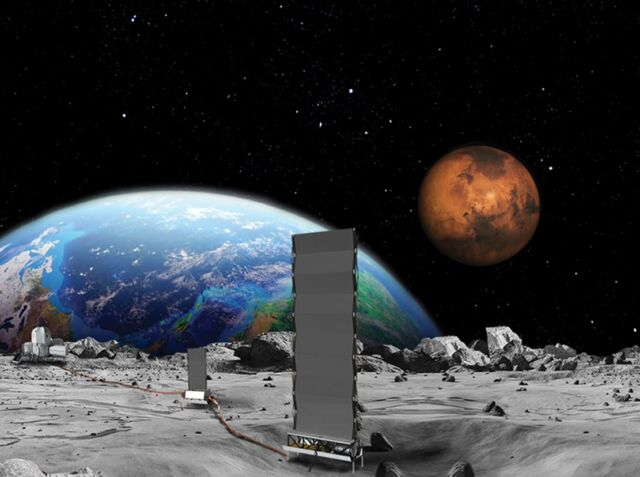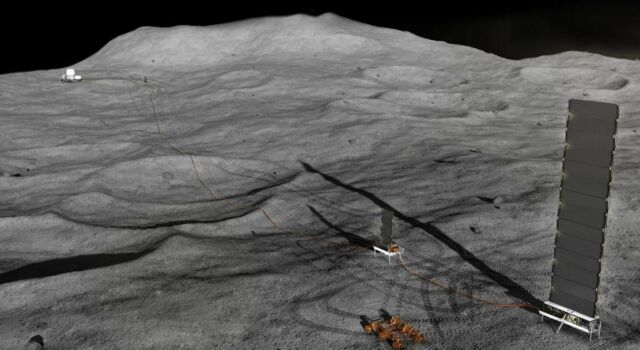 A concept image of NASA’s Fission Surface Power Project. Credit NASA
A concept image of NASA’s Fission Surface Power Project. Credit NASA
NASA’s Nuclear Reactor project on the Moon aimed to create designs for a small nuclear reactor that can produce electricity.
NASA is finishing the first part of its Fission Surface Power Project. This project is to use this reactor for a test on the Moon and for future designs for Mars.
In 2022, NASA gave three companies $5 million each to come up with their designs. They had to include the reactor, systems for turning its heat into power, getting rid of excess heat, and managing and distributing the power. They also had to estimate costs and make a schedule for developing it.
The goal is to have enough power to keep humans on the Moon for at least 10 years.
 NASA plans a sustained presence on the Moon and eventually Mars. Safe, efficient, reliable energy will be key to future robotic and human exploration. Credit NASA
NASA plans a sustained presence on the Moon and eventually Mars. Safe, efficient, reliable energy will be key to future robotic and human exploration. Credit NASA
Trudy Kortes, who leads the project, said having a nuclear reactor on the Moon is important to show it’s safe, clean, and reliable. Nights on the Moon are tough because they’re long and cold, so solar power isn’t always enough. A nuclear reactor could work in the dark or in areas that never see sunlight, possibly where there’s water ice.
NASA made sure the requirements for the reactor were flexible. This lets the companies come up with creative ideas while still meeting NASA’s standards.
Lindsay Kaldon, Fission Surface Power project manager at NASA’s Glenn Research Center in Cleveland, said:
“There was a healthy variety of approaches; they were all very unique from each other. We didn’t give them a lot of requirements on purpose because we wanted them to think outside the box.”
source NASA





Leave A Comment